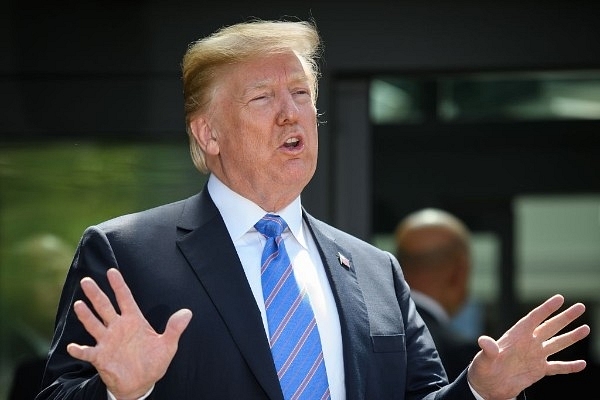
US-China Trade War: Donald Trump Fires Yet Another Salvo Against China
US President Donald Trump fired yet another salvo in the ongoing confrontation over trade with China by announcing a fresh set of tariffs on imports of Chinese products to the US, South China Morning Post has reported.
The 10 per cent tax on about $200 billion of Chinese imports will come in to effect on 24 September and a steeper rate of 25 per cent will be imposed at the end of the year, according to administration officials. The tariffs are targeted at a vast swathe of goods ranging from luggage to seafood.
In a statement, Trump explained the reason for the new tariffs “For months, we have urged China to change these unfair practices, and give fair and reciprocal treatment to American companies. We have been very clear about the type of changes that need to be made, and we have given China every opportunity to treat us more fairly. But, so far, China has been unwilling to change its practices.
To counter China’s unfair practices, on 15 June, I announced that the United States would impose tariffs of 25 per cent on $50 billion worth of Chinese imports. China, however, still refuses to change its practices – and indeed recently imposed new tariffs in an effort to hurt the United States economy.”
President Trump has already announced two previous rounds of 25 per cent tariffs on shipments worth $50 billion a year.
Sending signals that US has gained the upper hand in the trade war with China, Trump also threatened that if China retaliated this time, US would impose further tariffs on another $267 billion worth of products, which would will almost all Chinese exports to the US estimated at over $500 billion.
Despite Beijing joining the World Trade Organisation regime in 2001, it has been steadfast in restricting foreign participation in the strategic sectors including media, telecommunications and auto manufacturing, Observers view Trump’s latest tariff manoeuvre as part of Washington’s strategy to force China to provide a level playing field for US companies to operate in China.
China through its policy framework virtually forces foreign companies to operate through joint ventures and enables local Chinese companies to access proprietary technologies as a quid pro quo for entry to the huge Chinese market.